Computer Animation
Algorithms and Techniques
Rick Parent
Ohio State University
T hird Edit io n
�
Table of Contents
Title page
Copyright
Dedication
Preface
Overview
Organization of the Book
Acknowledgments
About the Author
Chapter 1. Introduction
1.1 Motion perception
1.2 The heritage of animation
1.3 Animation production
1.4 Computer animation production
1.5 A brief history of computer animation
1.6 Summary
References
Chapter 2. Technical Background
2.1 Spaces and transformations
2.2 Orientation representation
2.3 Summary
References
Chapter 3. Interpolating Values
3.1 Interpolation
3.2 Controlling the motion of a point along a curve
3.3 Interpolation of orientations
3.4 Working with paths
3.5 Chapter summary
References
Chapter 4. Interpolation-Based Animation
4.1 Key-frame systems
4.2 Animation languages
4.3 Deforming objects
4.4 Three-dimensional shape interpolation
4.5 Morphing (two-dimensional)
4.6 Chapter summary
References
Chapter 5. Kinematic Linkages
5.1 Hierarchical modeling
5.2 Forward kinematics
5.3 Inverse kinematics
5.4 Chapter summary
References
Chapter 6. Motion Capture
�
6.1 Motion capture technologies
6.2 Processing the images
6.3 Camera calibration
6.4 Three-dimensional position reconstruction
6.5 Fitting to the skeleton
6.6 Output from motion capture systems
6.7 Manipulating motion capture data
6.8 Chapter summary
References
Chapter 7. Physically Based Animation
7.1 Basic physics—a review
7.2 Spring animation examples
7.3 Particle systems
7.4 Rigid body simulation
7.5 Cloth
7.6 Enforcing soft and hard constraints
7.7 Chapter summary
References
Chapter 8. Fluids: Liquids and Gases
8.1 Specific fluid models
8.2 Computational fluid dynamics
8.3 Chapter summary
References
Chapter 9. Modeling and Animating Human Figures
9.1 Overview of virtual human representation
9.2 Reaching and grasping
9.3 Walking
9.4 Coverings
9.5 Chapter summary
References
Chapter 10. Facial Animation
10.1 The human face
10.2 Facial models
10.3 Animating the face
10.4 Lip-sync animation
10.5 Chapter summary
References
Chapter 11. Behavioral Animation
11.1 Primitive behaviors
11.2 Knowledge of the environment
11.3 Modeling intelligent behavior
11.4 Crowds
11.6 Chapter summary
References
Chapter 12. Special Models for Animation
12.1 Implicit surfaces
�
12.2 Plants
12.3 Subdivision surfaces
12.4 Chapter summary
References
APPENDIX A: Rendering Issues
APPENDIX B: Background Information and Techniques
B.1 Vectors and matrices
B.2 Geometric computations
B.3 Transformations
B.4 Denevit and Hartenberg representation for linked appendages
B.5 Interpolating and approximating curves
B.6 Randomness
B.7 Physics primer
B.8 Numerical integration techniques
B.9 Optimization
B.10 Standards for moving pictures
B.11 Camera calibration
Index
�
Copyright
Acquiring Edit o r: St even Ellio t
Develo pment Edit o r: Ro byn Day
Pro ject Manager: Paul Go t t ehrer
Designer: Jo anne Blank
Morgan Kaufmann is an imprint of Elsevier
225 Wyman Street, Waltham, MA 02451, USA
© 2012 Elsevier Inc. All rights reserved.
No part of this publication may be reproduced or transmitted in any form or by any means, electronic or mechanical,
including photocopying, recording, or any information storage and retrieval system, without permission in writing from the
publisher. Details on how to seek permission, further information about the Publisher’s permissions policies and our
arrangements with organizations such as the Copyright Clearance Center and the Copyright Licensing Agency, can be
found at our website: www.elsevier.com/permissions.
This book and the individual contributions contained in it are protected under copyright by the Publisher (other than as
may be noted herein).
Notices
Knowledge and best practice in this field are constantly changing. As new research and experience broaden our
understanding, changes in research methods or professional practices, may become necessary. Practitioners and
researchers must always rely on their own experience and knowledge in evaluating and using any information or
methods described herein. In using such information or methods they should be mindful of their own safety and the
safety of others, including parties for whom they have a professional responsibility.
To the fullest extent of the law, neither the Publisher nor the authors, contributors, or editors, assume any liability for any
injury and/or damage to persons or property as a matter of products liability, negligence or otherwise, or from any use or
operation of any methods, products, instructions, or ideas contained in the material herein.
Library o f Co ngress Cat alo ging-in-Publicat io n Dat a
Application submitted
Brit ish Library Cat alo guing-in-Publicat io n Dat a
A catalogue record for this book is available from the British Library.
ISBN: 978-0-12-415842-9
Printed in the United States of America
12 13 14 16 16 10 9 8 7 6 5 4 3 2 1
For information on all MK publications visit our website at http://store.elsevier.com
�
Dedication
To Kim and John, for teaching me to keep things in perspective.
And to my wife, Arlene, for her attention-to-detail approach to life, especially when juxtaposed
to my ‘big picture’ way of doing things.
�
Preface
�
It should come as no surprise to anyone reading this book that activity in Computer
Animation has exploded in recent years - as a research area, as an academic field of study, as
a career, and even as a hobby. Feature length films are now often stored digitally and
incorporate digital special effects (often referred to as computer generated imagery and
abbreviated CGI). As listed by the Internet Movie Database (imdb.com) [1] as of March 2012, all
of the top 10 U.S. films (All-Time U.S. Box Office) depend on extensive use of CGI. Computer
animated films have become top box office attractions - according to the same movie
database, 2 of the top 10 feature length films are computer animations (Shrek 2 and Toy Story
3) with a third having a significant computer animation component (Avatar). Recent Technical
Achievement and Scientific and Engineering awards from the Motion Picture Academy of Arts
and Sciences have been for digital image technology including render queue management,
facial motion retargeting, tools to review digital effects, and efficient rendering of volumetric
effects, just to name a few [2]. And, of course, the computer game industry has exploded. The
Entertainment Software Association estimate that, in 2010, consumers spent $25.1 billion on
video games, hardware and accessories [3].
Computer animation is more accessible that ever. Desktop, high-quality, computer
animation is now possible because of sophisticated off-the-shelf animation software, cheap
CPU cycles, and cheap storage coupled with digital video recording. Many technical programs
and computer science departments now offer courses in computer animation and the
proliferating artistic programs train digital artists in the use of off-the-shelf animation software.
There are now major technical conferences and journals that archive developments in
computer animation and video game algorithms and techniques.
This book addresses practical issues, provides accessible techniques, and offers
straightforward implementations. Purely theoretical discussions have been avoided except to
point out avenues of current and future research. In some cases, programming examples are
complete working code segments—in C, which can be copied, compiled, and run to produce
basic examples of the algorithms discussed; other programming examples are C-like
pseudocode that can be translated into working code. C was chosen because it forms the
common basis for languages such as C++ and Java, and it lends itself to illustrating the step-
by-step nature of algorithms. The Appendixes cover basic material that the reader may find
useful as a refresher as well as specific algorithms for use in implementations.
Overview
This book surveys computer algorithms and programming techniques for specifying and
generating motion for graphical objects, that is, computer animation. It is primarily concerned
with
is advanced
undergraduate or beginning graduate students in Computer Science. Computer graphics
programmers who want to learn the basics of computer animation programming and artists
who use software packages to generate computer animation (digital animators) who want to
better understand the underlying computational issues of animation software will also benefit
from this book.
three-dimensional (3D) computer animation. The main audience
This text is not intended for animators using off-the-shelf animation software (except to
the extent that it might help in understanding the underlying computations required for a
particular technique). It does not attempt to cover the theory of computer animation, address
the aesthetics of computer animation, or discuss the artistic issues involved in designing
animations. It does not detail the production issues in the actual commercial enterprise of
producing a finished piece of animation. And, finally, it does not address the issue of computer-
assisted animation, which, for our purposes, is taken to mean the computerization of
conventional hand-drawn techniques; for the most part, that area has its own set of separate
issues [4] [5]. The book does concentrate on full 3D computer animation and identifies the
useful algorithms and techniques that animators and programmers can use to move objects in
interesting ways. While 3D techniques are the emphasis, 2D is not completely ignored.
The fundamental objective of computer animation programming is to select techniques
and design tools that are expressive enough for animators to specify what they intend, yet at
the same time are powerful enough to relieve animators from specifying any details they are
not interested in. Obviously, no one tool is going to be right for every animator, for every
animation, or even for every scene in a single animation. The appropriateness of a particular
animation tool depends on the effect desired and the control required by the animator. An
artistic piece of animation will usually require tools different from those required by an
animation that simulates reality or educates a patient. In this spirit, alternative approaches are
presented whenever possible.
�
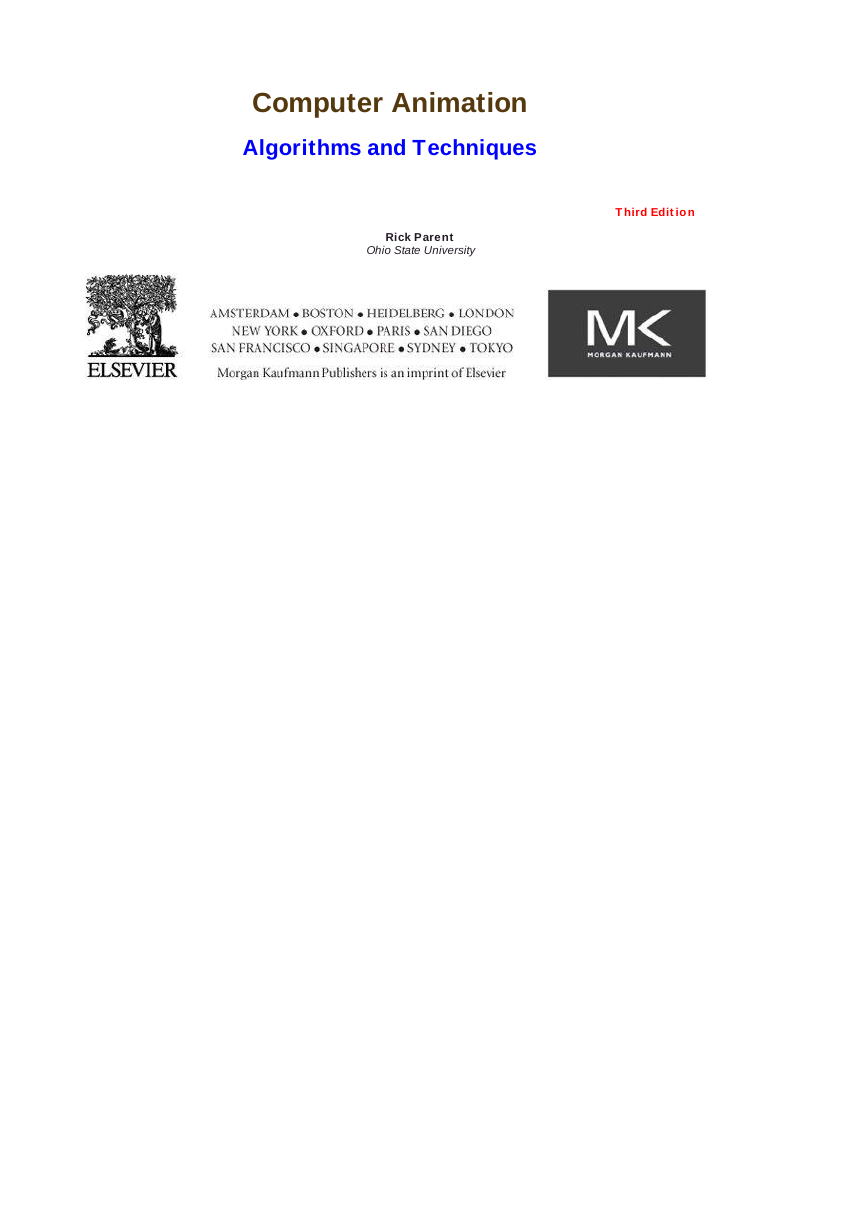
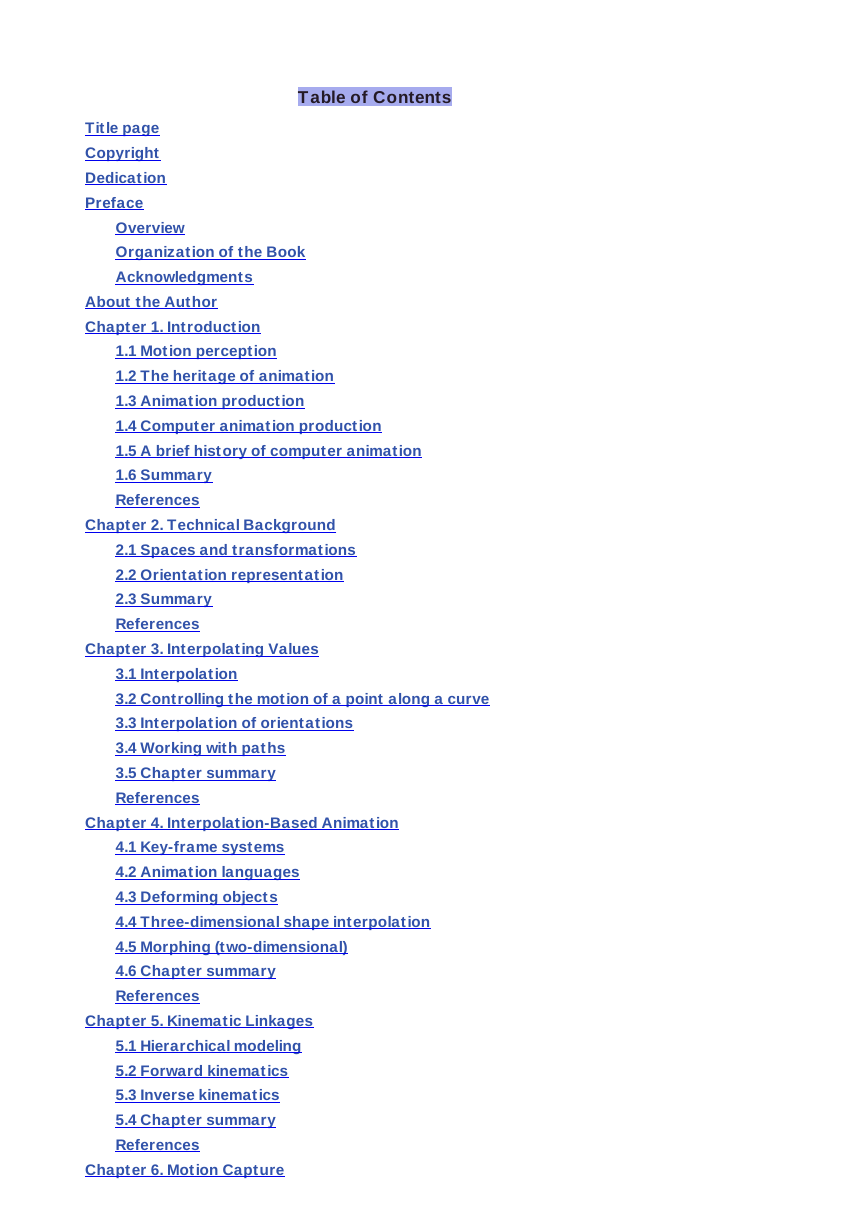
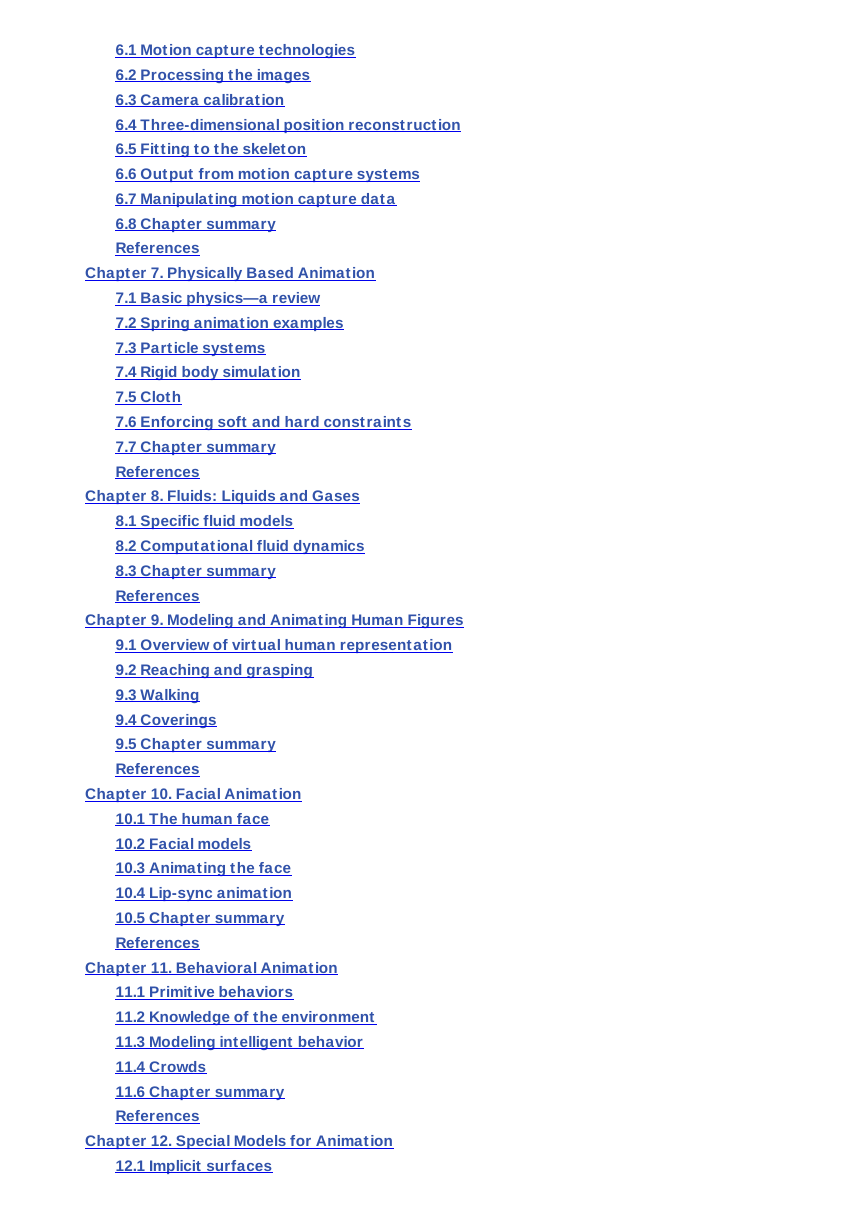

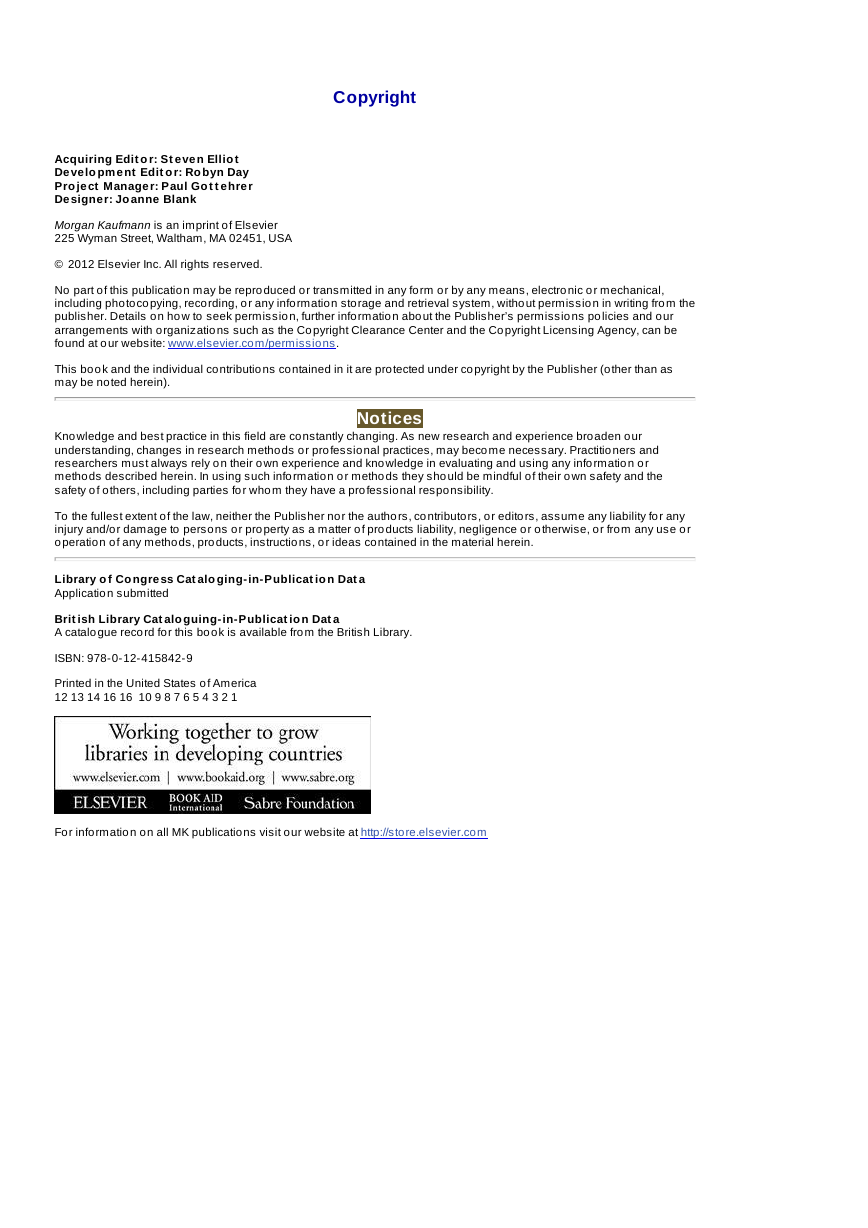
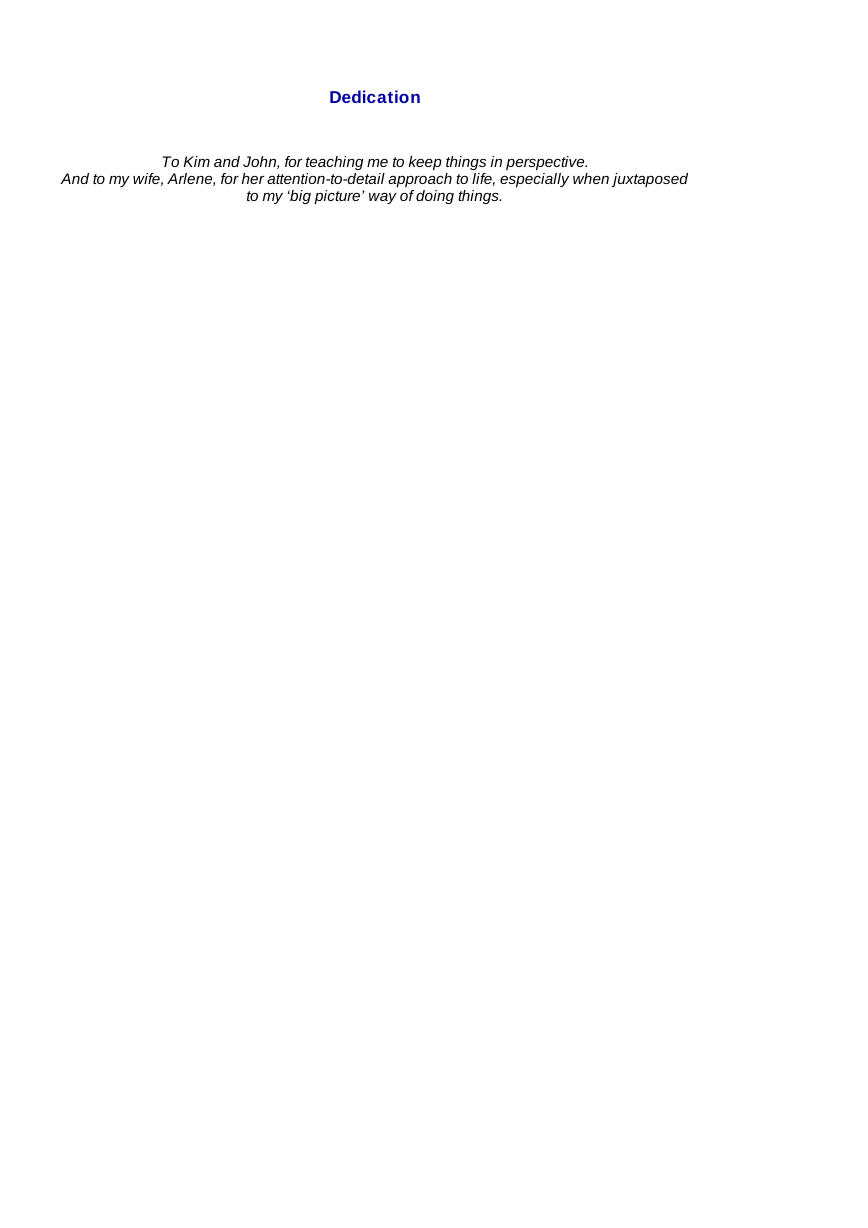

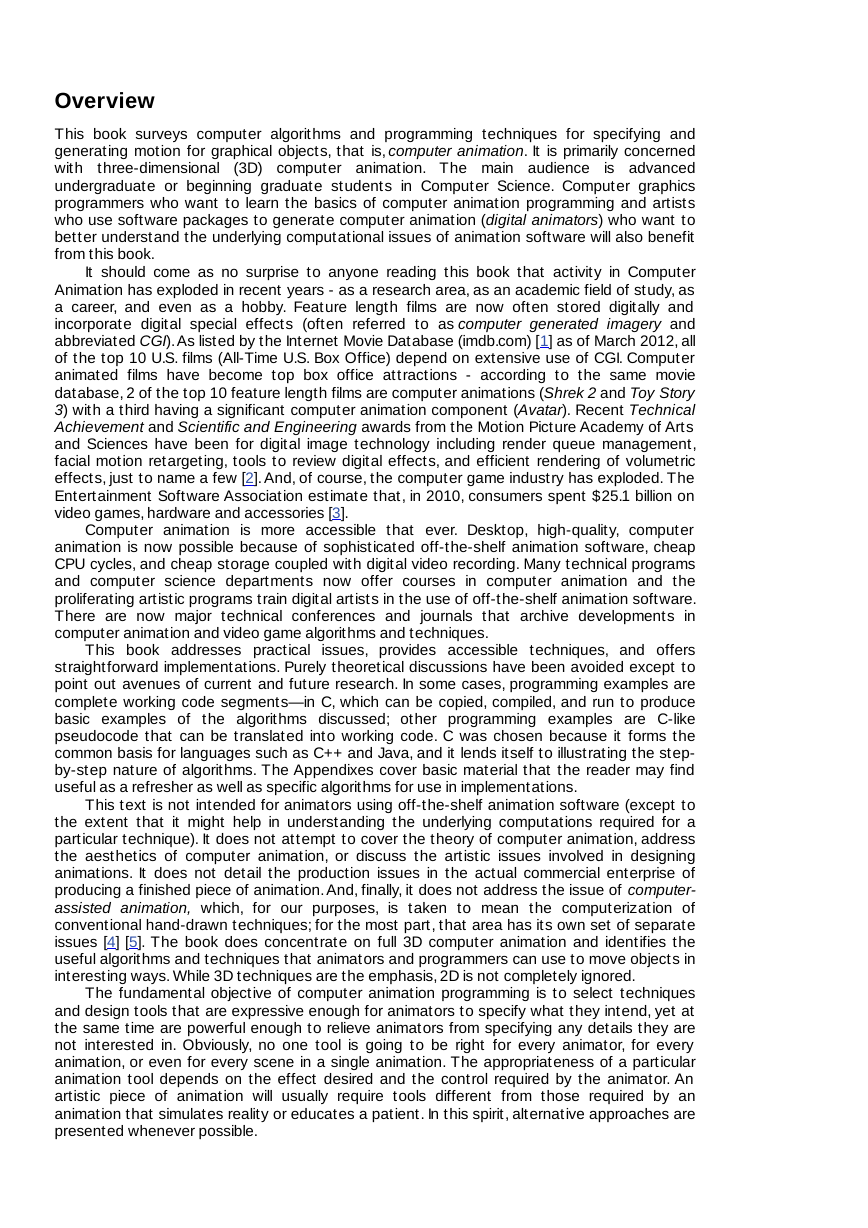








 2023年江西萍乡中考道德与法治真题及答案.doc
2023年江西萍乡中考道德与法治真题及答案.doc 2012年重庆南川中考生物真题及答案.doc
2012年重庆南川中考生物真题及答案.doc 2013年江西师范大学地理学综合及文艺理论基础考研真题.doc
2013年江西师范大学地理学综合及文艺理论基础考研真题.doc 2020年四川甘孜小升初语文真题及答案I卷.doc
2020年四川甘孜小升初语文真题及答案I卷.doc 2020年注册岩土工程师专业基础考试真题及答案.doc
2020年注册岩土工程师专业基础考试真题及答案.doc 2023-2024学年福建省厦门市九年级上学期数学月考试题及答案.doc
2023-2024学年福建省厦门市九年级上学期数学月考试题及答案.doc 2021-2022学年辽宁省沈阳市大东区九年级上学期语文期末试题及答案.doc
2021-2022学年辽宁省沈阳市大东区九年级上学期语文期末试题及答案.doc 2022-2023学年北京东城区初三第一学期物理期末试卷及答案.doc
2022-2023学年北京东城区初三第一学期物理期末试卷及答案.doc 2018上半年江西教师资格初中地理学科知识与教学能力真题及答案.doc
2018上半年江西教师资格初中地理学科知识与教学能力真题及答案.doc 2012年河北国家公务员申论考试真题及答案-省级.doc
2012年河北国家公务员申论考试真题及答案-省级.doc 2020-2021学年江苏省扬州市江都区邵樊片九年级上学期数学第一次质量检测试题及答案.doc
2020-2021学年江苏省扬州市江都区邵樊片九年级上学期数学第一次质量检测试题及答案.doc 2022下半年黑龙江教师资格证中学综合素质真题及答案.doc
2022下半年黑龙江教师资格证中学综合素质真题及答案.doc